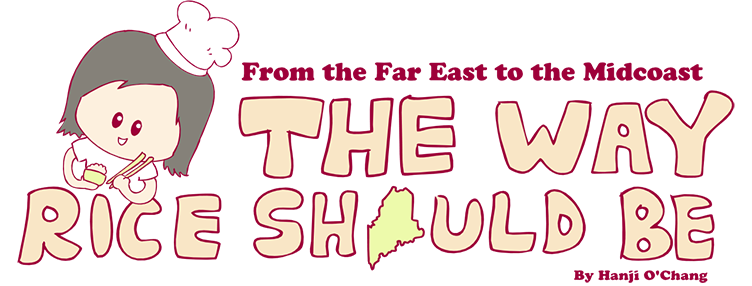During our stay, we had a feast of Hakka cuisine. One simple dish we had at the end of the meal was a sweet and creamy bowl of tea called Lai Cha or “thunder tea.” It is believed that the tea was created during the Three Kingdom period (220 to 280 CE), when a group of hungry, wounded soldiers were traveling across the country. All they had left were some tea and nuts to eat. A doctor supposedly came up with the idea to grind up all the tea leaves and nuts and then mix them in boiling water. This created a huge volume of nourishment that not only lasted for days, but most importantly gave the soldiers energy to continue their journey.
Traditionally, the tea is made by grinding the tea leaves, nuts and seeds into a paste with a mortar and pestle. Then hot water is poured into the bowl to create the delicious creamy tea. But unlike the traditional method, which requires a pretty arduous workout with the mortar and pestle, my simple recipe simply uses a blender. When you get down to it, it’s essentially a hot smoothie bowl packed full of caffeine and protein. It makes a perfect breakfast for the cold season!
Ingredients
- Makes two servings
- 2 Tbsp. loose green tea leaves
- 1 Tbsp. pumpkin seeds
- 3 Tbsp. roasted peanuts
- 2 Tbsp. black and white roasted sesame seeds
- 2 Tbsp. maple syrup
- 1/4 tsp. salt
- 11⁄2 cups plus 2 Tbsp. boiling hot water
- Additional ingredients:
- Puffed rice cereal (optional)
Directions:
Thunder tea can be served both sweet and savory with a variety of different ingredients. But the key ingredients that never change are green tea, peanuts and sesame seeds. For this recipe I also use pumpkin seeds, but you may add other nuts and seeds tailored to your taste as well.
Start by blending the green tea leaves into a fine powder. If you happen to have Matcha green tea powder, you may skip this step and go ahead and blend the powder along with the other ingredients.
Then add the pumpkin seeds, sesame seeds, peanuts and salt in the blender. Blend until it has a wet, sandy texture.
Add in 2 Tbsp. of boiling hot water and 2 Tbsp. maple syrup and blend for another 30 seconds until the mixture becomes a thick paste. Traditionally it’s just made with regular sugar, but since we’re in Maine, maple syrup makes a great substitute.
Scoop 3 Tbsp. of the thunder tea paste into a bowl or a mug, then pour 3⁄4 cup boiling hot water over it and stir well until no lumps remain. You can top it with rice cereal or granola and what you will end up with is a delicious, healthy and very filling breakfast to start your day. You can make a bigger batch of the tea paste and just store it in a jar, and you will have yourself an instant smoothie every morning by just adding hot water to it. The paste should be able to keep in the refrigerator for up to three weeks.







































